TOP BAR HIVE – Why in the world? Aside from being of value to the older BEEK and or the disabled. I simply do not get it. I just bought a Top bar hive – not center entranced but with a front entrance to a 3 ft. hive.
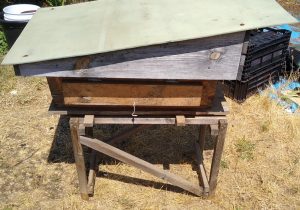
As a friend put it, “Very seasonal at best. Might be okay if one were only interested in wax and honey, but the bees would obviously have to be considered disposal items because they would never make it through to April in such a contraption.” I agree. As you can see mine is a think single wall and the top and bottom are of plywood.
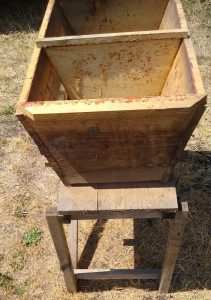
No comparison to the one he has out in the field. One that he tried hard to use for a couple of years. Bees always died and now even scouts are not interested. And that had full 2x dimensioned lumber with a SCREENED bottom, as it should. If scout bees turn their nose up at some hive you know it is problematical.
So a major redo is in the works before I ever use it and with the nectar flow more or less finished this is not the time to think bees should be forced to attempt to make foundationless frames. These triangular top frames is what they have to work with. 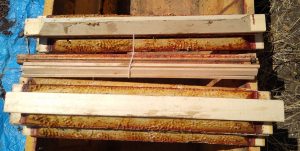

SO it is: CHOP and CROP time – IF I were to introduce some brood and honey frames from a Langstroth hive to a top bar. A Dremel tool or other fancy tool seem to work, but I suppose a pruning shear and a sharp serrated knife would do just as well. Oh well. Here is one example.
Observations: On most videos I see the bee brush but I have found goose feather or rooster tail feather usage better. Remained puzzled by the CENTER placement of the brood frames in the center of one video. Until the end, this top bar has side entrances rather than the front entrance that mine has.
My own major issue with this cross frame entranced top bar is the issue of hive heat transference considering what we just went through. Unless I put in a slatted rack I can see issues with this design. I certainly do not want to see honey running down the sides from sagged comb that has torn apart.
Final issue for me: No screen bottom on this for mite control and ventilation. Commentary and suggestions are most welcome. I am not intending to do anything with this until I further insulate and thicken its walls.
This is a slatted rack that would give extra space to the bottom of the hive and a more normal passage way for the bees
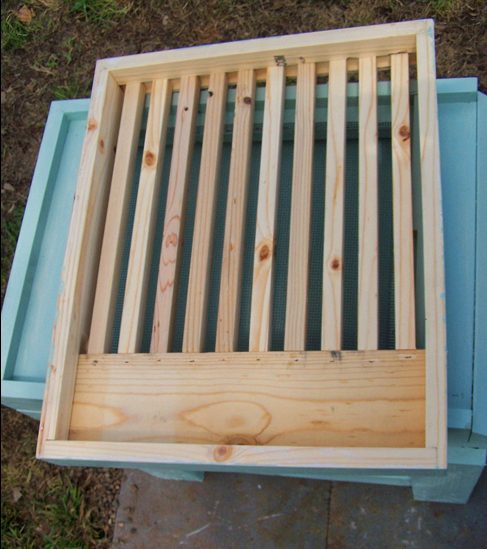
More pictures of my hive and what needs to be done 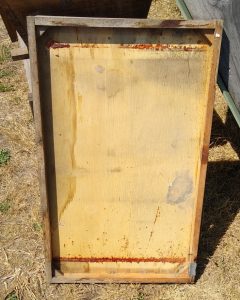
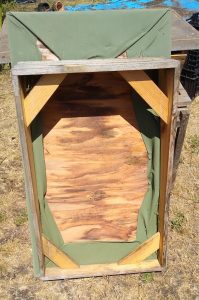 .
.

 .
. Both the inner lid and the top lid are woefully thin and will need to be insulated and built up with more than one sheet of plywood.
Sadly this will be a toy or winter project to dink with. The fact that scout bees leave it alone is quite a damning testimonial. Still I will play with it and get it screened and thicker walled.
The Top Bar is sold for the ‘set it up and forget about it’ beekeeper or homeowner. Probably what sells for the ‘greenie’ who wants to help the pollinators. 😯 They then forget and the whole thing goes to pot.
The early and pitifully weak 3 lb. swarm I caught this Spring came from such a Top bar. A good indication of the weak ability of these hives to overwinter. This from a better Top bar than what I have.
Final issue for me: No screen bottom on this for mite control and ventilation. Commentary and suggestions are most welcome. I am not intending to do anything with this until I further insulate and thicken its walls.
(Visited 116 times, 1 visits today)
